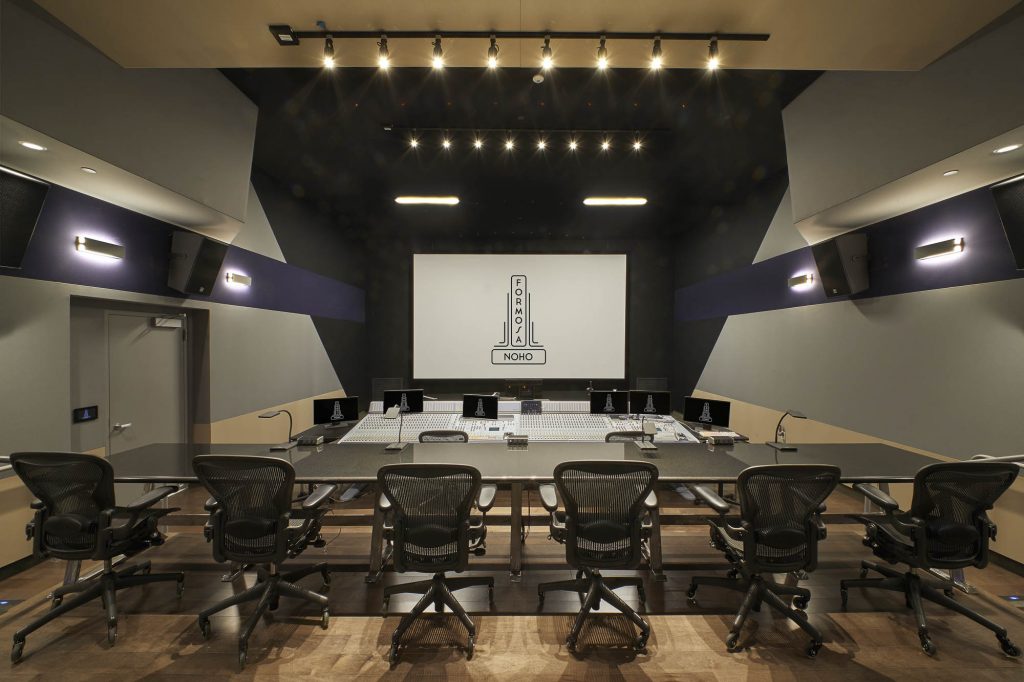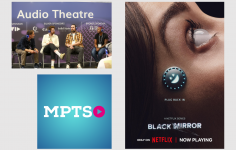AoIP Comes of Age
In the course of our recent work we’ve met with around 50 customers specifically to talk about AoIP in Audio Post. Our aim was to gauge adoption and uncover the sentiment of post houses when it comes to making the leap to IP-based audio.
Pretty much the established norm in post production’s sister-sectors – broadcast and live – adoption has been more tentative for AoIP in audio post.
What we’ve found is a spectrum, from “somewhat aware of the technology” all the way up to facilities who can be described as “all-in” ; Studios who have implemented AoIP throughout their facility. What’s clear is that everyone is somewhere along this continuum. Interest around AoIP in Audio Post is at an all-time high.
What’s particularly interesting is… why now?
At the 2019 AES show in New York, Focusrite Pro VP at-the-time Rich Nevens told us they’d had customers on the booth asking if their Dante-equipped Red-series interfaces were new. In fact, they’d been around a while, the newest product (X2P – reviewed here on Resurface) being well over a year old.
What is new is the post-production sector’s drive to seek out IP-based solutions to very contemporary problems. Interest is piqued, even if it hasn’t yet peaked. We came across three main triggers for making the leap:
Wider Formats
Most apparent is a 180 degree pivot from minimal physical IO towards high channel counts. The trend, for an entire generation, was for fewer and fewer physical connections. A mic or two in, perhaps six or eight outs, with everything else file-based and in the box.
With today’s economic kingmakers – the OTT Streamers – specifying Dolby Atmos as a deliverable, there’s a sudden and dramatic reversal of this trend, a need – right now or coming soon – to accommodate hundreds of channels of ‘real’ I/O.

Dan Shimiaei of LA’s Formosa Group explains “There’s no longer a correct or even a permanent amount of I/O for a mix stage offering immersive formats. Not only does the math quickly exceed the traditional building blocks available to a DAW system, but the requirement changes from project to project or from morning to afternoon”.
Shimiaei continues “Formosa Group handles multiple back-to-back projects across our stages, each of which will have different requirements. There’s zero scope for error, so each of our many setup types needs to be accurate, repeatable and recallable. Every half hour we can save is valuable to us”.
The age of physical routing complexity is seemingly back, and we’re – literally – not wired that way.
Security
A second common reason to explore AoIP in Audio Post is security. Not just because it’s good practice, but because a gold star for compliance goes hand in hand with installing Atmos when it comes to attracting the most coveted clients.

With the TPN (Trusted Partner Network) now enveloping two major entertainment industry associations (MPA and CDSA) under a unified set of guidelines and auditing, one aspect which has caused concern among audio folk is around physical positioning of CPUs and equipment racks.
Gone are the days of host computers being welcome in or near the suite. Instead, security requirements point to the need for a single, secure machine room. One point of access to account for, one set of coded doors, one set of CCTV cameras keeping watch over the media.
This is problematic where multiple DAWs and their peripherals might ordinarily be in suites or rack lobbies. A redesign becomes necessary. Cable runs may now stretch to hundreds of meters. Chances are any pre-existing cable risers are full to bursting. Here once again Audio Over IP comes to the rescue.
Capacity
The third reason is billable capacity. Most major post hubs worldwide are reporting boom times, telling of unprecedented levels of work. Given this bubble might or might not last – and will certainly continue to change shape, there’s a need to try and accommodate more demand using existing real estate where possible. Sharing V/O booths, creating ad-hoc review or ADR rooms, generally being smart about who and what goes where and when.
AoIP in Audio Post: Dante Dominates
The vast majority of Atmos-equipped and TPN-compliant facilities have incorporated AoIP in their installation to a greater or lesser degree.
When we say AoIP in Post, lets be clear: Other standards are available, but we mean Dante.
AoIP in Audio Post is Dante’s domain, with the alternatives all a distant second. So much so that it’s not uncommon, when asking a non-technical audio person about Audio Over IP, to be met with a puzzled expression, an awkward pause… then a breakthrough – “Oh you mean Dante ?”.
This anecdotal evidence is backed up by the numbers. According to Audinate (the makers of Dante chipsets and software) in their June 2019 financial report covering the prior 12 months:
- The number of Dante enabled products available grew by 30% to 2,134. Six times more than any other AoIP standard.
- The number of Dante chips, modules and cards sold increased 42%
- The number of manufacturers incorporating Dante in their products increased by 48 to 270, with a further 170 currently in-the-works
- The number of people taking the free online or face-to-face Dante training courses reached 60,000
Looking at best practice in studio design over the last 20 years, the notion of running cables to allow hundreds of audio channels, with those channels endlessly assignable, individually or en masse, to and from anywhere in the building, would be preposterous. Over specified, over budget and overkill. Little did we know.
Conversely, the decision to flood-wire everywhere with Cat 5e or Cat6 ethernet by default was a given.
As luck would have it – turns out they’re the same thing.



